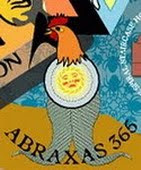TPE is co-authored by Timothy Leary, Ralph Metzner and Richard Alpert; three fathers of the psychedelic counter-culture. It was published in 1964 after the professors had been kicked out of Harvard University and whilst the ‘Psychedelic Review’ was still in publication. The premise of TPE is as a reinterpretation of ‘The Tibetan Book of the Dead’, under the guise of chemical mind-expansion. The goal of which is to produce a practical framework, which is conducive to producing the highest attainable ecstatic experience from psychedelic drugs.
The book is split into four distinct sections. Firstly, there is a general introduction, which is made up of three tributes – Jung, the psychiatrist, Lama Anagarika Govinda, a writer and expositor of Tibetan Buddhism and Walter Evans-Wentz, writer and anthropologist. It represents the establishment of a lineage of thought; a historical, academic and above all spiritual premise for the being of the work.
Secondly, is the interpretation itself of the ‘Tibetan Book of the Dead’. Following the guidelines set out in the text, this section is split into three further examinations; the First, Second and Third Bardo. They follow the state of the ‘ego’ through the experience. I very much doubt I have enough knowledge of Tibetan Buddhism to understand the extent to which it is an accurate academic reading; I guess, it is loose. But instead I will briefly outline their psychedelic interpretation.
The First Bardo represents the “period of ego-loss or non-game ecstasy”; in which the white light, the height of a trip, is interpreted spiritually. The Second Bardo, “The period of hallucinations”, establishes the seven wrathful visions and the seven peaceful visions and discusses their representation. There is a certain amount of symbolic rigidity involved with this Bardo, in regard to the actual experience of hallucinations.
The Third Bardo is the “Period of Re-entry”. Pinchbeck quite rightly notes that there is a moral perception ingratiated within the complete perspective of the book. This is highlighted most readily in the Third Bardo, which tackles the return to normal ego game play, in regard to such concepts as judgment and sex. The third section of the book tackles several very interesting concepts; for example, it’s exploration of “set and setting”. Set and setting conceptualize the experience as being a combination of your current mind set and your environmental setting. There is also practical advice on holding a session, drugs, dosages and even some information on preparation.
The fourth and final section is psychedelic counter-culture’s predilection for the rich and subjective imagery of words. During the third section they discuss the ability to move between parts of the Bardo’s; the fourth are passages meant to be read out during a psychedelic experience. They are designed to help you have safe passage round the experience.
Pinchbeck speaks with some love of the book and this is why I believe he used the phrase “cultural artifact”. His is a nostalgic love but not, I think, an intellectual respect. But there is plenty of justification in what he says and especially in the fact that the anthropological outlook of psychedelic culture is now more focused on South America, rather than Asia. It is, in this regard, the “cultural artifact”; a historical bent.
I believe, however, that TPE gives us an element of great practical importance, which validates it as more than just mere historicism. The final section is an attempt to establish a linguistic framework for the genre. It is a process which Leary talks about the genre requiring, in more depth, in the ‘Politics of Ecstasy’. Words like ‘unconscious’ and ‘existence’ appear over and over again. Granted, spiritual terminology like ‘light’, is also included but there remains a definite language link between this and later genres of psychedelic literature."
Then, above and beyond language structure in itself, there is the application of the texts. As a practical guide to engaging with the psychedelic experience, it’s framework is a functional model of language and concept. It is not a “cultural artifact” but rather a spiritual practice – good guides often have the privilege of readily being.
Perhaps, Pinchbeck’s view, is a reflection of a distrust of 1960s conceptual notions. He is of the shamanic generation. There are, I believe, many perceptions and reasons to read this book; not least, historically, academically and spiritually. It also retains a practical novelty, which is certainly worth attention and adds a very important notion of controlled exploration; something modern psychonauts are reinterpreting with each new reading. Whatever you’re perceptions though, it remains a truly unique passage into psychedelic literature."





















3 comments:
Prevod knjige na nasem mozete naci na ovom sajtu >> http://bgd.8k.com/
A cujem sad pojavila se i na vasaru knjiga, jebiga, ko mi je kriv kad ne pohadjam te manifestacije, ko zna sta je jos dobro bilo...
Ja sam nasao knjigu Moje problematicno dete by Albert Hofman na vasaru!
Post a Comment